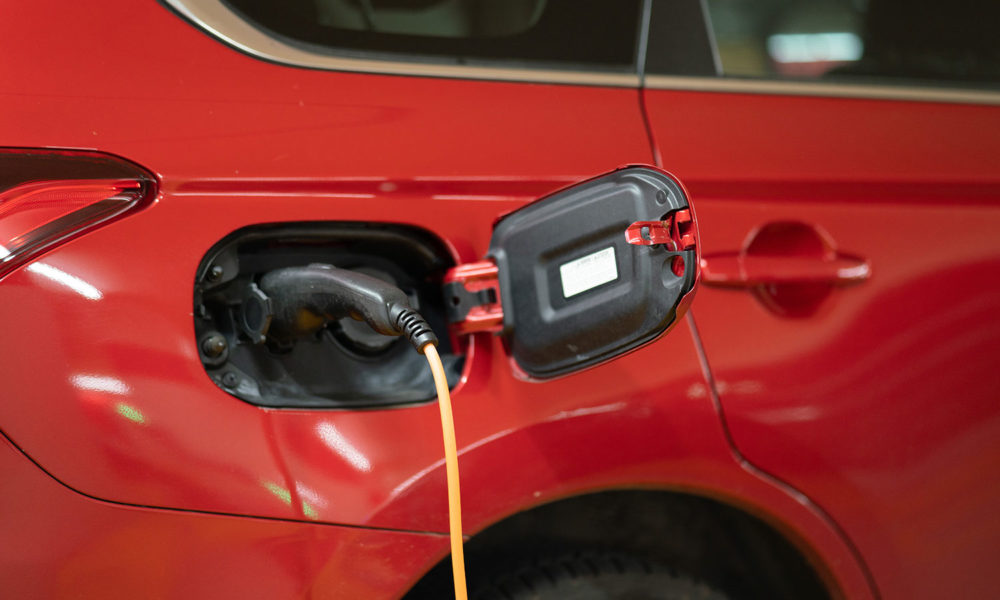This blog post was written with substantial input from Alyssa Tsuchiya.
On Friday, a Minnesota administrative law judge ruled the state can proceed with finalizing new clean car standards that will give Minnesotans more control over air quality improvements and progress toward the state’s greenhouse gas reduction goals, as well as increase vehicle model choices for Minnesota car buyers and save drivers money at the pump.
I usually write about electric vehicle (EV) charging programs. Increased access to charging means more people have the opportunity to adopt an EV. Plus, vehicle-grid integration is an exciting nexus of emerging opportunity to reduce the cost of EV ownership and support the electric grid. The Clean Cars Minnesota rules are an important complement to charging programs in enabling more customers to adopt lower-emitting vehicles, including EVs.
What are the Clean Car Minnesota rules?
Clean Cars Minnesota rules do two complementary things. The rules require automakers to sell electric cars and trucks in Minnesota so that Minnesotans have access to buy EVs to accelerate the transition to electrified transportation. In addition, the rules require automakers to reduce the greenhouse gas emissions of their overall vehicle offerings in Minnesota so that Minnesotans have the cleanest vehicles regardless of fuel type.
The rules will increase the availability and number of clean car models, including EVs, for Minnesotans. That’s great news because polling by Union of Concerned Scientists (UCS) and Consumer Reports shows many Minnesotans are interested in an EV for their next vehicle.
The benefits of clean car standards
The Clean Car Minnesota rules will have major benefits for the state. One of those benefits is protecting the health of Minnesotans. Policies that promote transportation electrification, as the Clean Car Minnesota rules do, are crucial because the air pollution from vehicles on Minnesota’s roads today is significant. The Minnesota Pollution Control Agency (MPCA) and the Minnesota Department of Health (MDH) estimate that particulate matter and ozone pollution from all sources are responsible for 2,000 to 4,000 deaths per year in Minnesota. Minnesota could avoid some of these deaths by substantially reducing air pollution from cars and trucks. Furthermore, UCS analysis found that low-income communities and communities of color experience a disproportionately large air pollution burden from cars, trucks, and buses. While the scope of that analysis is broader than passenger vehicles, the results show the need for ambitious policies to reduce air pollution and inequitable public health burdens.
Another benefit of the Clean Cars Minnesota rules reducing climate-warming emissions. Minnesotans are already experiencing the impacts of climate change, driven by combustion of fossil fuels. Unfortunately, the state failed to reach its 2015 greenhouse gas reduction goal of 15 percent relative to 2005, and it is not on track to meet the 2025 or 2050 goals of 30 percent and 80 percent reduction relative to 2005, respectively. The recent greenhouse gas inventory conducted by the Pollution Control Agency and the Department of Commerce confirms that the transportation sector produces the largest portion of climate-warming emissions in Minnesota. While emissions in the sector have decreased 7 percent compared to 2005 levels, the reductions have tapered off.
Plug-in EVs charged in the electric grid region that includes Minnesota emit about half the global warming emissions of average gasoline-powered cars, even when taking upstream emissions of each fuel into account. Adopting the LEV and ZEV standards will put Minnesota on a clear path towards significantly lower emissions. Our analysis shows that half of the emission reduction progress would disappear by 2030 if Minnesota doesn’t adopt stronger vehicle emission standards than the current federal program. It is more important than ever for the state to enact a suite of complementary policies to clean up transportation emissions. The Clean Car Minnesota rules are one such opportunity to enable Minnesotans to reduce emissions and protect them from the worst impacts of climate change.
Clean Car Minnesota rules also provide benefits to drivers from savings on reduced fuel costs. Rural Minnesota drivers, in particular, stand to save quite a bit by driving more efficient gasoline cars and electric vehicles. In addition, widespread EV adoption will benefit all electric utility customers. If vehicle charging loads are well-managed, MJ Bradley & Associates estimate that widespread adoption of consumer electric cars and trucks consistent with meeting the state’s greenhouse gas goals could provide cumulative net benefits to utility customers, EV drivers, and society at large totaling over $30 billion state-wide by 2050.
Clean Cars Minnesota is not a done deal yet
Unfortunately, some state legislators have tried to derail, delay, and undermine Minnesota’s effort to adopt strong clean car standards through hardball legislative tactics. But the administrative law judge’s recent ruling unequivocally confirms that the standards are necessary, reasonable, and within the administration’s statutory authority. It’s time for those legislators to abandon their efforts to hold Minnesota back and, instead, celebrate Minnesota being the first Clean Cars state in the Midwest.

